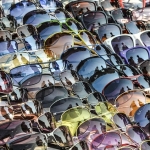


The majority of our clients travel to Europe ( it’s our specialty) and we send them lots of information prior to departure about being prepared for their upcoming trip, travel tips, currency, passports, etc. European cities have a reputation for some petty crime like pickpockets, scammers, etc. It’s always best to use your common sense and certainly don’t flaunt your money or valuables. Besides personal security, there are some other local travel scams to watch out for. We certainly don’t want to alarm you and to be honest, most of the scams are really the exception more than the rule. TRO (Travel Research Online) featured an article from The Washington Post and have put together a list of possible scams. Here are a few and how to avoid them:
Fake Accident Scam examples: A passerby squirts you with a liquid, condiment or fake bird dropping. While you inspect the splotch, an accomplice pickpockets you. The squirter might also try to clean the spot, another diversionary tactic. Other distract-the-tourist ploys include an elderly person falling, a woman tossing a baby or cat at you, or someone dropping a wallet and accusing you of pocketing the contents after you pick it up. In a similar vein, someone on a scooter or in a car intentionally crashes into your vehicle and tries to resolve the incident by demanding cash.
How to avoid it: Secure all of your valuables before heading out for the day. For instance, stash wallets in slash-resistant bags that lock or in hidden pouches — any strategy that will thwart sticky fingers. Ignore your good Samaritan impulses and do not retrieve any valuable objects, including people, from the ground. In the vehicular accident scenario, wait for the police to arrive, assuming you can trust law enforcement. If you are in a country with corrupt cops, contact the U.S. Embassy for help.
Item Switcheroo and knock-offs scam: A vendor shows you a high-end item, such as a leather purse or wallet, and you agree on a reasonable price. After paying, the seller substitutes the item for a knockoff. Another possibility: The product was a fake from the get-go . . . An antique with a rich history was actually made yesterday. Or a precious gem turns out to be worthless.
How to avoid it: Do not buy high-fashion accessories or antiques from street vendors or shady-looking shops. Only purchase goods from reputable dealers and stores that can provide documents of authenticity. For the full article and lots of other Travel related tips and information, click on the link below for TRO (Travel Research Online)
Leave A Comment